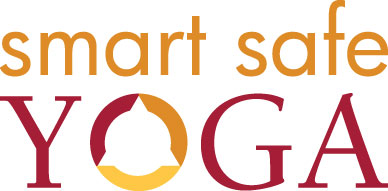yoga injuries
Speakeasy Yoga
This is my first post after two fun years of transitioning from clinical practice to my new roles as writer, researcher and mentor. I’ve been honored to be asked to participate in the new Yoga Alliance (YA) organizational development process. Specifically to serve on the scope of practice committee for yoga teachers. This feels like full-circle as back in the late 90’s my son, Adam, and I created the first YA website and database. My member number was # 46 and there was a great deal of excitement about the potential for the organization to bring yoga into our culture. The years passed, many changes occurred, and I finally withdrew my membership when the “therapy” Prohibition was rolled out of principle because of the process utilized, and also because I identified more as a yoga therapist than a yoga teacher, and could not comply with the Prohibition in my profile or websites. I’m pleased to share that the new leadership at YA is undergoing a sincere process of organizational change that suggests many positive processes underway to address earlier shortcomings, and more importantly, better serve their membership and the public. All of this means I’ve been revisiting their mission, my intentions, and how I might best serve the YA community. I’ve invested a great deal of time and effort in leading yoga therapy and yoga safety, beginning with the first article on yoga safety in 2004. My prior thinking and leadership on those issues is captured here about how yoga…
Someone Gets Injured in Your Yoga Class: What now?
[The following should be understood as risk management advice and NOT legal advice or counsel. If you have legal questions or concerns, contact your local legal professional.] Can we talk about this? Anyone who has taught for any length of time has almost certainly discovered that something happened in a yoga class you taught where a student had an unpleasant outcome physically. Let’s stop right there. Check in on your thoughts and emotions right now before proceeding. Just listen to the internal chatter in response to that stimulus. Agreement? Denial? Acknowledgement? Offense? … there’s probably a spectrum of responses that if you will watch a bit longer may invite closer consideration of what I have to write this morning. Consider this…what if one of these lands on my work surface with YOUR NAME in: JANE DOE Plaintiff vs. YOUR NAME Defendant Stop… listen again for protests, gasps, incredulity, silence, etc. What emerges for you? What are these responses based on? What do you think about me the author? What do you think about the legal system? How about the plaintiff (person claiming to have been harmed)? Recently much has been written about yoga injuries. So why bring this up again? The reason I bring this up is because despite a good deal of discussion as to whether yoga injuries are a real problem, who’s responsibility they are, and should the industry be regulated, the actual practice of risk management in settings where…
Stretchasana
The common misunderstanding of yoga as merely “stretching” can lead to some not so smart or safe yoga practices. Yoga is more than stretching. The definition of yoga is, in one word, unity (of body, mind and spirit). Without discounting mind and spirit, understanding the physical aspect of yoga will enhance the overall experience of unity. As you explore your body’s abilities on the mat, you will undoubtedly experience the sensation of stretch. Stretching has many benefits including improved circulation, joint mobility and muscle elasticity. Understanding the science of stretching will improve your safety on the mat and your enjoyment. Stretching Methods There are several methods of stretching. These include: Static – considered a passive stretch (muscles not active during stretch) but pushed to end range/tolerance. Passive (or relaxed) stretching – is a form of static stretching. However, with passive stretching, you relax into a pose letting your body weight, or gravity, stretch your muscles. Active stretching – is when you use antagonistic muscle groups (muscles that oppose the muscle you are stretching) or agonist (the muscle group you are stretching) to facilitate a reflexive response that neurologically relaxes the muscle you are stretching. Active stretching is accomplished by the voluntary use of one’s muscles without external aid. Ballistic – dynamic bouncing in and out of stretches These methods of stretching can be combined. A stretch can start out passive but then become active as you contract muscle groups while in a pose. Or, you may actively move into a…
Subscribe for Updates
Receive Smart Safe Yoga blog updates sent directly to your inbox.



